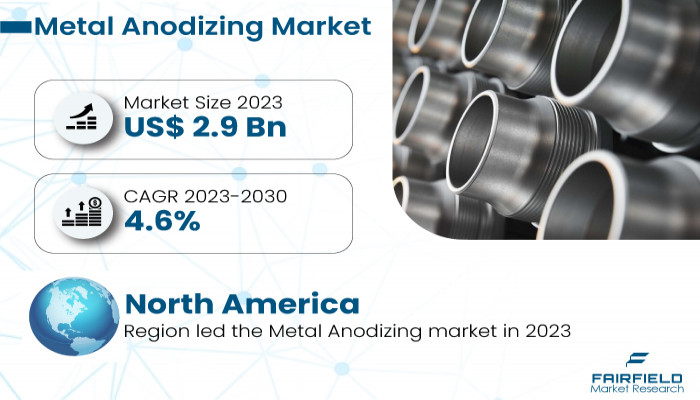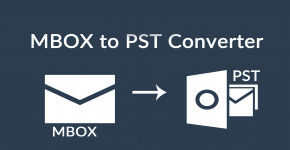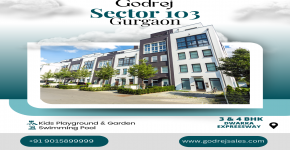 Launch apps instantly. Claim $200 credits on DigitalOcean
Launch apps instantly. Claim $200 credits on DigitalOcean
Metal Anodizing Market Insights, Growth By 2030
Written by Neha Patil » Updated on: March 27th, 2024

Global metal anodizing market is poised for significant growth, with projections indicating a surge from US$2.9 billion in 2023 to US$4.0 billion by 2030, representing a compound annual growth rate (CAGR) of 4.6%. A recent market analysis conducted by Fairfield Market Research highlights key trends, growth determinants, barriers, and opportunities shaping the trajectory of the metal anodizing industry.
Key Trends Driving Market Expansion
1. Rise in Medical Device Applications: The demand for metal anodizing is being fueled by the growing applications in the medical device sector. Anodized metals, known for their biocompatibility, are crucial for surgical instruments, implants, and other medical devices where biocompatibility is paramount.
2. Integration in 3D Printing: Anodized metals are increasingly being integrated into 3D printing processes due to their preserved electrical and thermal conductivity. This trend opens avenues for applications in electronic components where these qualities are critical.
3. Quality Control Challenges: In large-scale production, maintaining consistent quality in the anodizing process poses challenges. Inconsistent quality control can lead to variations in coating performance, color, and thickness, potentially lowering product acceptance.
Market Segmentation and Dominance
4. Aluminum Anodizing Dominance: The aluminum anodizing category held sway in 2023, finding extensive use in industrial and machine parts such as fasteners, gears, and structural components, enhancing resilience to wear and corrosion in harsh industrial environments.
5. Sulfuric Acid Anodizing Segment: Sulfuric acid anodizing is anticipated to dominate the global market share, primarily driven by its widespread application in the electronics and semiconductor industries for components such as heat sinks, connections, and enclosures, ensuring electrical insulation and corrosion protection.
6. Aerospace and Defense Sector: In 2023, the aerospace and defense category commanded the market, employing anodizing on missile casings and structural parts to provide corrosion resistance and protective qualities crucial for reliable missile systems.
Regional Insights and Market Dynamics
7. North America's Leadership: North America is expected to account for the largest share of the global metal anodizing market, driven by technological innovation and adoption. The region's focus on digitalization and Industry 4.0 technologies in metal anodizing processes is poised to propel market expansion by enhancing efficiency, quality, and customization.
8. Asia Pacific's Growth Trajectory: The Asia Pacific region is witnessing significant market growth, fueled by strategic investments in infrastructure development across nations like China and India. Anodized materials are in high demand for construction projects, including bridges, airports, and commercial buildings, driving market expansion.
Key Growth Determinants and Barriers
9. Demand Surge from Automotive Industry: The automotive sector's emphasis on lightweight materials for improved fuel efficiency and corrosion resistance is driving the adoption of anodized aluminum for various automotive components, enhancing longevity, durability, and aesthetic appeal.
10. Aerospace and Defense Applications: Anodized coatings play a vital role in aerospace and defense applications, offering exceptional corrosion protection and durability in extreme environments, thereby ensuring the reliability and security of critical components.
11. Challenges in Large Part Anodizing: Achieving uniform coating thickness on large items poses challenges, potentially leading to variations in appearance and functionality. Complex rack and fixture designs are often required to suspend heavy items during the anodizing process, adding to operational complexities and costs.
Key Trends and Opportunities
12. Focus on Sustainable Anodizing Processes: The industry is witnessing a shift towards environmentally friendly anodizing techniques that employ substitutes or safe chemicals, reducing environmental footprint and emissions. Water-based anodizing techniques are gaining traction for their reduced reliance on hazardous materials.
13. Advancements in Nanotechnology: Nanotechnology-enabled coatings are enhancing corrosion resistance and surface hardness, extending the longevity and durability of anodized components. Nanoparticles create protective layers, offering additional barriers against corrosion and mechanical wear.
14. Digitalization and Industry 4.0 Integration: Automation of anodizing processes through Industry 4.0 technologies is optimizing production settings, ensuring consistent, high-quality coatings. Predictive maintenance techniques are reducing downtime and enhancing operational efficiency.
Regional Frontrunners
15. North America: The region's dominance is secured by heavy consumption in the automotive and aerospace industries, driven by ongoing investments in technological advancements and renewable energy sources.
16. Asia Pacific: Emerging as the fastest-growing region, Asia Pacific's diverse industrial landscape and burgeoning construction activities are propelling the demand for anodized materials, particularly in architectural applications.
Leaders in Global Metal Anodizing Space
17. The global metal anodizing market is characterized by a handful of key players, including Lintec, Aalberts Surface Treatment, Talon Innovations Corporation, and others. The industry is witnessing increased competition and consolidation efforts among leading players.
For More Industry Insights Read:https://www.fairfieldmarketresearch.com/report/metal-anodizing-market
Copyright © 2024 IndiBlogHub.com Hosted on Digital Ocean









Post a Comment
To leave a comment, please Login or Register